Content warning: discussion and graphic illustrations of the Holocaust.
Note: this post was originally published in February 2022. It has been updated in October 2023.
A note from Ms Kate (The Lavender Librarian)
I would like to thank the membership of this Facebook group for bringing this enlightening thread to our attention.
I’ve included the thread in its entirety, only adding sub-headings for clarity and making some minor changes to the punctuation. You’ll find my reflections at the end of this piece.
This piece was originally published as a series of tweets by Gwen C. Katz
Katz is a writer, author, and game designer and is the author of AMONG THE RED STARS published by Harper Collins.
MAUS and the Pajamafication of Literature
There’s a phenomenon I actually see extremely commonly when literature is used to teach history to middle school and high school students. Let’s call it “pajamafication.”
“Age Appropriate”?
So a school district nixed MAUS from their curriculum, to be replaced by something more “age-appropriate.” If I recall correctly, they didn’t cite a specific replacement title, but it will probably be something like John Boyne’s THE BOY IN THE STRIPED PAJAMAS.
THE BOY IN THE STRIPED PAJAMAS is tailor-made for classroom use. It’s taught at countless schools and it’s squeaky-clean of any of the parent-objectionable material you might find in MAUS, NIGHT (by Elie Wiesel), or any of the other first-person accounts of the Holocaust.
It’s also a terrible way to teach the Holocaust.
The Problem with Pajamafication
I’m not going to exhaustively enumerate the book’s flaws — others have done so — but I’ll summarize the points that are common to this phenomenon in various contexts.
First, obviously, the context shift. MAUS, NIGHT, et al are narrated by actual Jews who were in concentration camps. THE BOY IN THE STRIPED PAJAMAS is narrated by a German boy. The Jewish perspective is completely eliminated.
The Problem with Innocence
Second, the emphasis on historical innocence. Bruno isn’t anti-Semitic. He has no idea that anything bad is happening. He happily befriends a Jewish boy with absolutely no prejudice.
Thus we’re reassured that you too, gentle reader, are innocent. You too would have had a childlike lack of prejudice and you too would be such a sweet summer child that you would have no idea the place next door is a death camp.
In MAUS, by contrast, the children are not innocent. They are perpetrators of injustice just like adults.
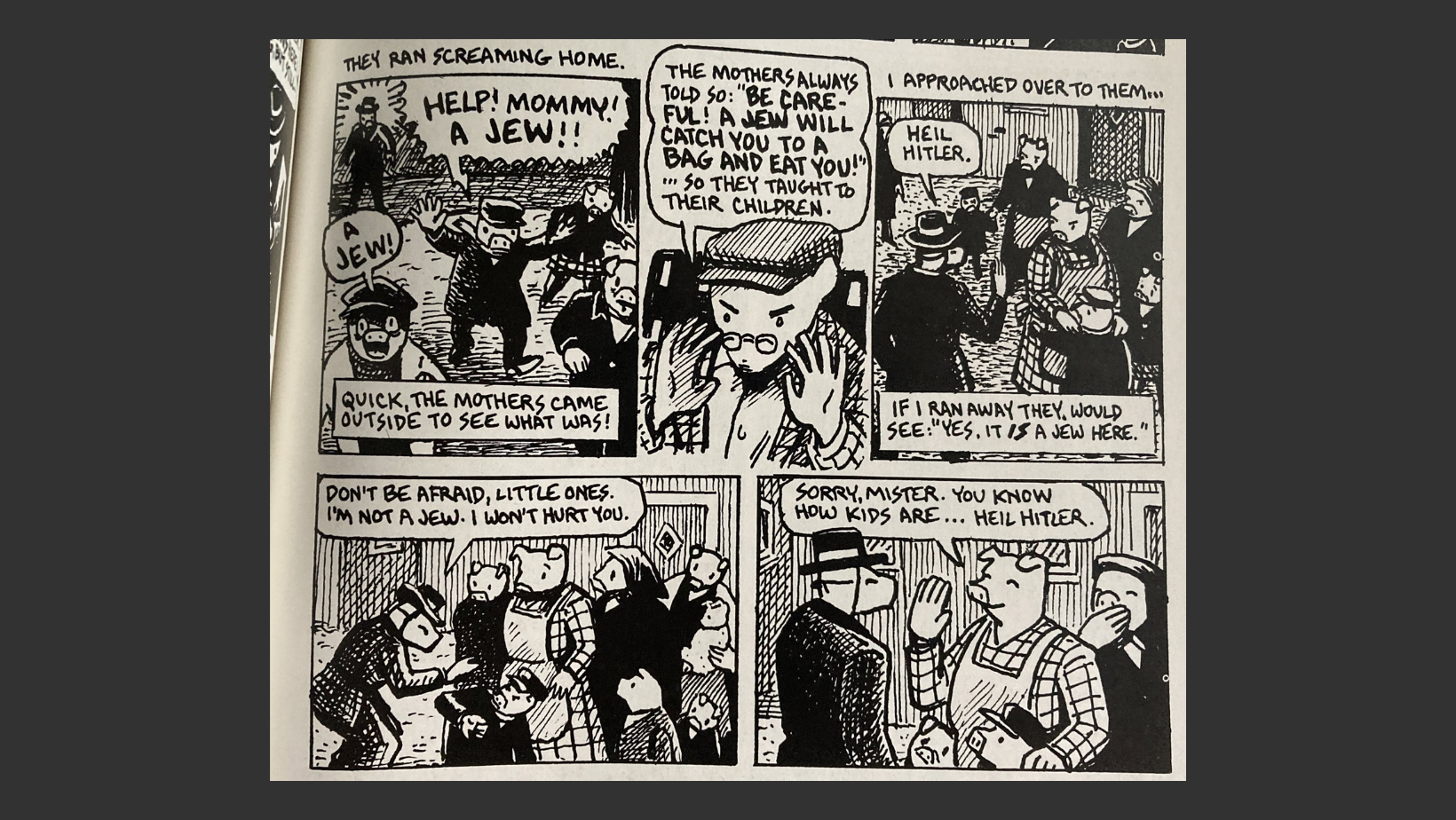
MAUS also smashes the claim that people just didn’t know what was going on in the camps.
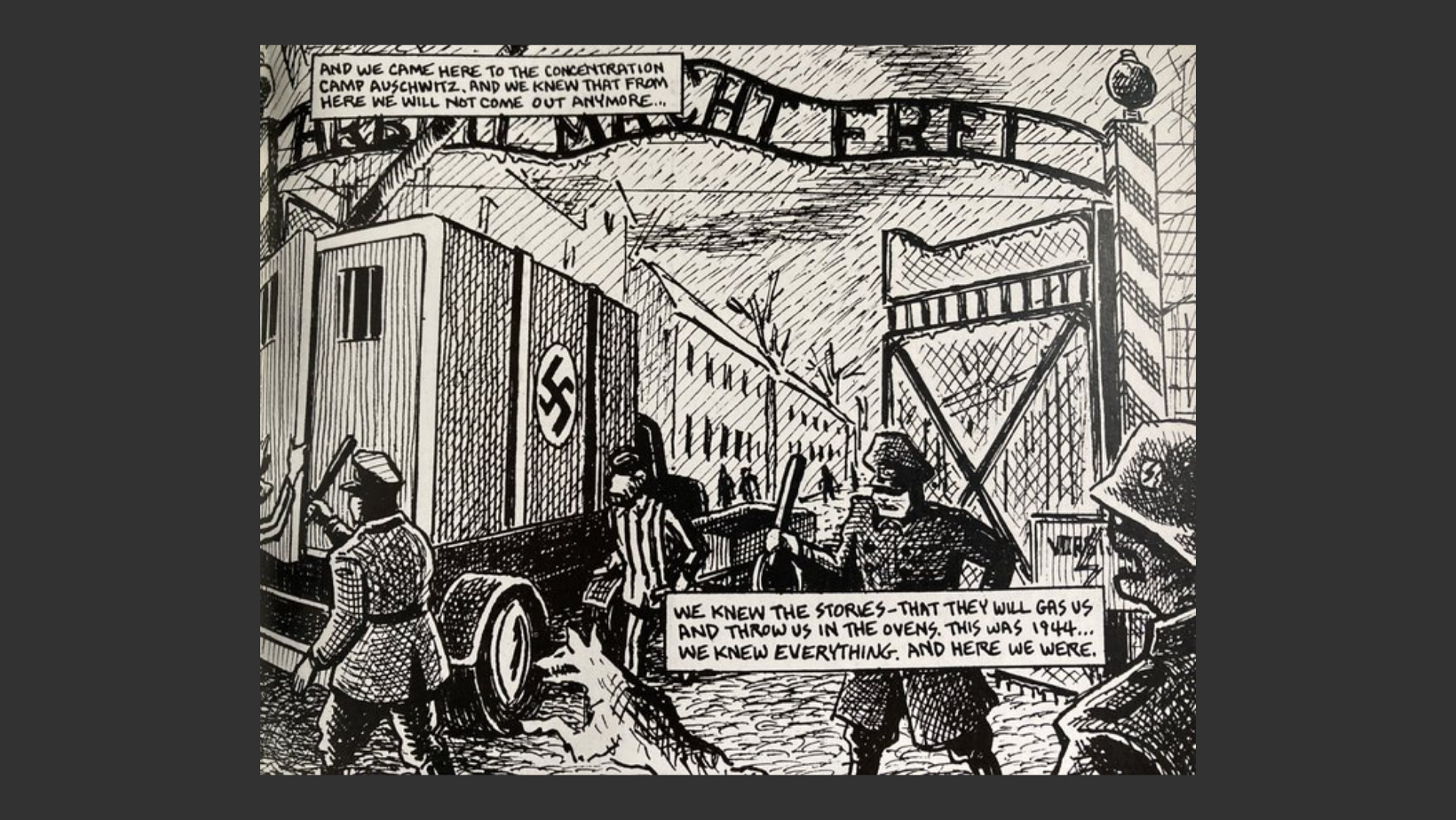
Non-Specificity is Erasure
Third, non-specificity. THE BOY IN THE STRIPED PAJAMAS turns a specific historical atrocity into a parable about all forms of bigotry and injustice. I’m sure Boyne thinks he’s being very profound. But the actual effect is to blunt and erase the atrocity.
There’s the too-cute-by-half way it avoids terminology: “Off-With,” “the Fury.” Harsh language becomes “He said a nasty word.”
It’s a Fable
Notice how “it’s a fable” ties in with the goal of eliminating anything parents might object to.
And that’s our fourth point. Bad things can happen, but only abstractly. Someone’s dad disappears. He’s just… gone. How? Who knows. People stand around looking hungry and unhappy and saying, “It’s not very nice in here.”
The Lifetime Movie Version of History
The ending is sad, but it’s sad like a Lifetime movie. It’s sanitized, it’s quick, there are no details, it’s meant to poke that bit of your heart that loves crying.
MAUS is Visceral
MAUS’s description of the gas chambers, meanwhile…
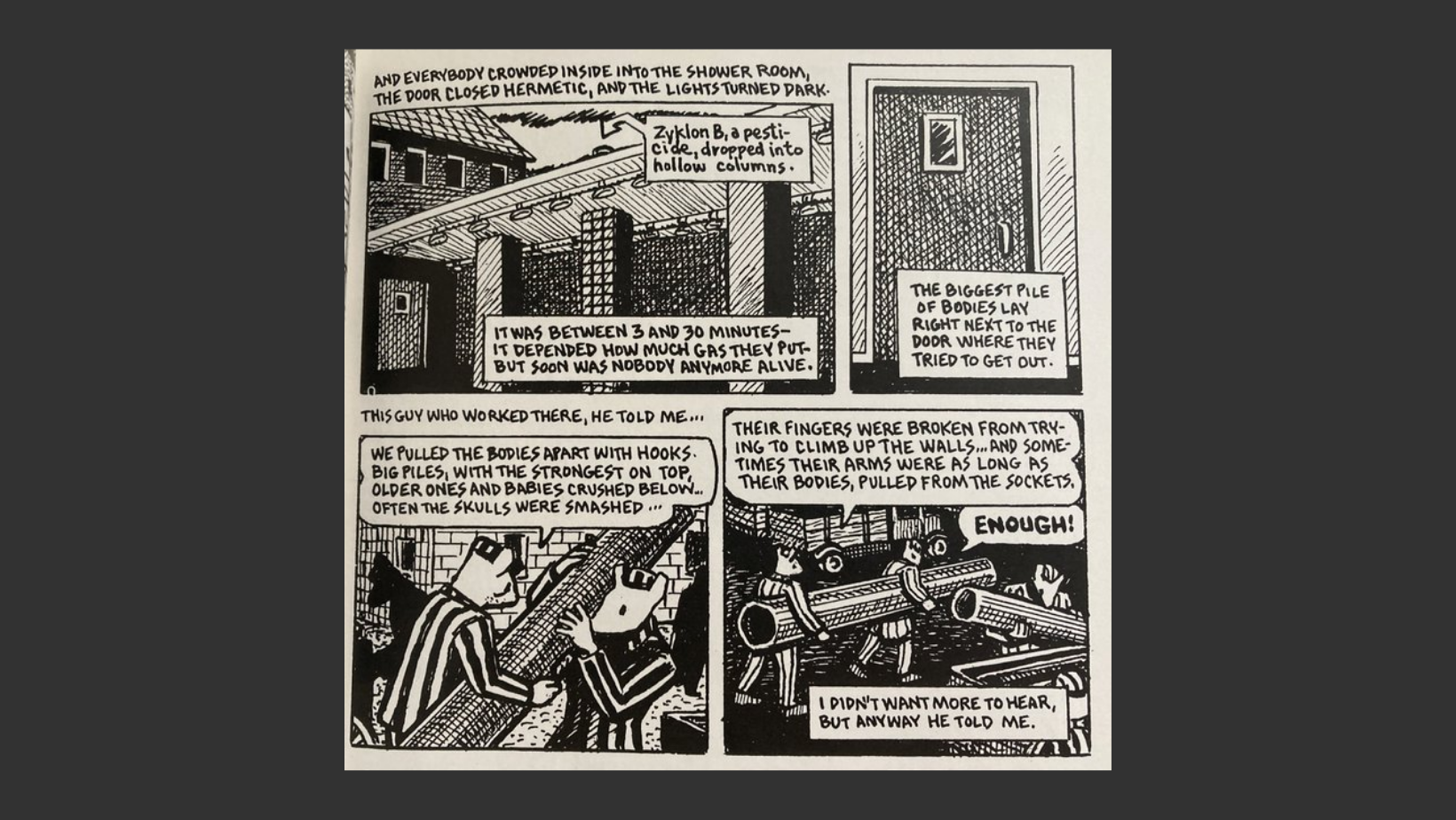
History Isn’t a Metaphor
A historical atrocity can never be a metaphor for all bigotry because the specifics are what makes it an atrocity. The Nazis didn’t just do “bad things, generally,” they did THESE things. And leaving out the details is simply historical erasure.
Fiction
Finally, fifth: Fiction.
However much poor little Bruno and Schmuel might rend your heartstrings, you can ultimately retreat into the knowledge that they aren’t real and they didn’t really die.
Now, I write historical fiction, and obviously I believe it has a place, in the classroom and out. But no Holocaust education can be complete without nonfiction that teaches about real people who genuinely did experience it.
One of the striking things about MAUS is how big the cast is and how few of them survived.

The Vitality of Truth
Because it’s a true story, MAUS can also explore neglected aspects like the intergenerational trauma, which simply vanish in a pat fictional story that is just finished when you get to the end.

The Conclusion
Thus, books like THE BOY IN THE STRIPED PAJAMAS are not an age-appropriate equivalent way to teach the Holocaust, but a false construction of history.
This ends the first part of the thread. But there’s more…
This is Not An Isolated Incident
The MAUS incident is not an isolated case. It’s part of a broad trend of replacing the literature used to teach history with more kid-friendly, “appropriate” alternatives.
And outside of the Holocaust, it usually doesn’t meet with much controversy.
It might mean replacing NARRATIVE OF THE LIFE OF FREDERICK DOUGLASS, AN AMERICAN SLAVE or Solomon Northup’s TWELVE YEARS A SLAVE with modern historical fiction, for example.
Wars, the Civil Rights movement, Apartheid: any “icky” part of history can be a target.
Primary Sources Vs. Historical Fiction
But it plays out along the same general lines: Primary sources replaced with modern fiction, victim perspectives replaced with perpetrators, specificity replaced with Star-Bellied Sneetch-style “Why can’t we all just get along?” metaphors.
The broad trend is destruction and recreation of history: The actual events, as narrated by the people they happened to, are declared unacceptable in their current state, and are replaced with books tailored to modern sensibilities, which are then declared the “correct” account.
In Protecting Feelings We Lose Meaning
These modern books can still depict bigotry and so on, but the angle will be changed just enough to make modern audiences not feel weird or gross. The primary source works will then get rejected for the crime of… making people feel weird and gross.
Read and Teach What is True
We need to reject this trend whenever it occurs in all areas of history. We must read and teach true accounts written by the people who really experienced these events. There is no other honest account of history.
Read MAUS, read NIGHT, read TWELVE YEARS A SLAVE. Give them to your children and then discuss with them about what they read.
Disclaimer
When a thread like this gets big, everyone assumes you’re an expert, so: This thread is nothing but one random individual’s thoughts. I am not a Holocaust survivor/descendant or a Holocaust scholar. Please talk to actual experts if you wish to learn more.
On February 7, 2022 Maus author Art Spiegelman gave a presentation for the Jewish Federation of Greater Chattanooga. The presentation is available to watch via Zoom or on the JFGC Facebook.
Pajamafication Hurts Everyone
The pajamafication of literature harms everyone. Even our youngest StoryTime friends.
What Gets Censored?
The books that draw the attention of censors are most often by and about members of traditionally excluded groups. Books that humanize BIPOC and LGBTQI2S+ people draw a great deal of censorship. These are, so often, the books we most need to read.
Why Censor?
I’ve heard of little ones claiming that those who want to ban books that teach accurate history want to do the awful things described in the books in question. I think there’s a truth to that that few would like to acknowledge.
The best books provide windows and mirrors. And some do not like their reflection.
Thank you, Gwen and Team!
I’d once again like to thank Gwen C. Katz for her insight and for generously agreeing to allow us to publish her words. I’d also like to thank the Storytime Solidarity content team for helping make this website a reality and for providing editorial and layout support.
Thank You Readers!
I’d also like to thank those reading. Please continue to support living BIPOC and otherwise traditionally excluded authors, and continue to visit our website to see what the librarians are up to now!
If you need to balance this out with something about Jewish joy I suggest either of Heidi Rabinowitz’s guest blogs for our page but especially her latest on Tu B’Shevat.
And, reader, if you’re feeling exceptionally generous, consider sharing what you find on this page so that we may reach more people!


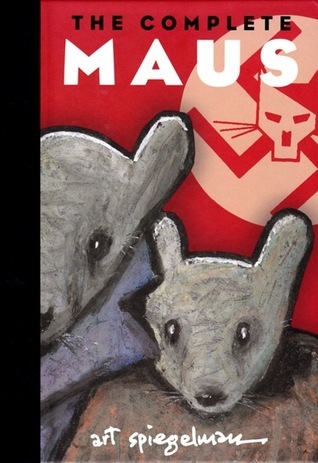
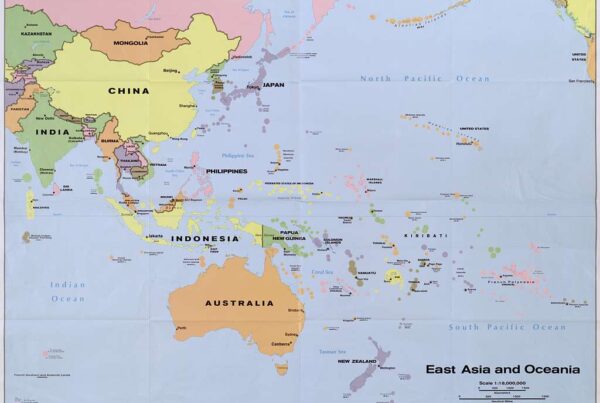


Lavender Librarian, thank you so much for bringing up this subject and for always being so supportive of the Jewish community! #jewishbooksarediversebooks